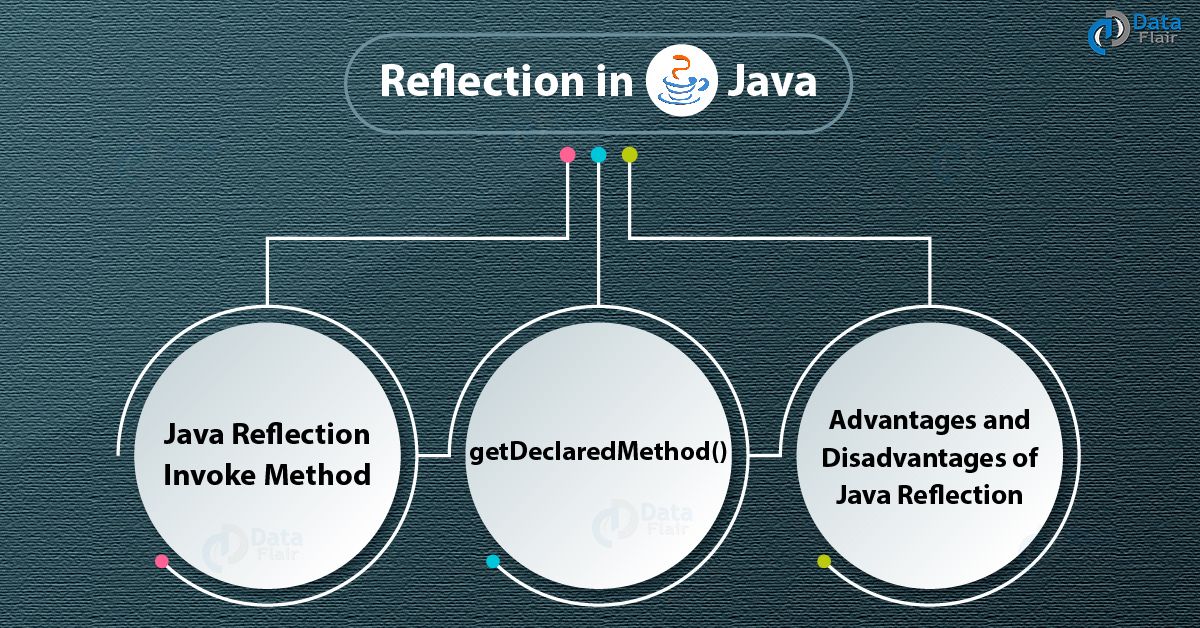What is Java Reflection?
Reflection in Java
Reflection is a runtime API for inspecting and changing the behavior of methods, classes, and interfaces. The java.lang.reflect package contains the required reflection classes. Reflection tells about the class to which an object belongs and the methods of that class that can be used for the object. One can call the methods at runtime using reflection regardless of the access specifier used.
Reflection helps when thinking about:
- Class: The
getClass()function is used to figure out what class an object belongs to. - Constructors: Reflection helps to get the public constructors of the class to which an object belongs using the
getConstructors()function. - Methods: The public methods of the class to which an object belongs are obtained using the
getMethods()method.
Example to determine the type of the object
class Demo {}interface MyInterface {}class Test {public static void main(String args[]) {try {Class c1 = Class.forName("Demo");System.out.println(c1.isInterface());Class c2 = Class.forName("MyInterface");System.out.println(c2.isInterface());}catch(Exception exp) {System.out.println(exp);}}}
Java Reflection is the process of examining or changing a class’s runtime behavior while it is still running.
Many methods in the java.lang.Class class can be used to get metadata, analyze, and modify a class’s run-time actions.
The java.lang.Class class primarily serves two purposes:
- provides mechanisms for retrieving a class’s metadata at runtime.
- provides methods for inspecting and modifying a class’s run-time actions.
Classes for java reflection can be found in the java.lang and java.lang.reflect packages.
Uses
The Reflection API is mostly used in the following applications:
- Eclipse, MyEclipse, NetBeans, and other IDEs (Integrated Development Environments) are examples.
- Debugging
- Tools for testing, etc.
Setting up before using Reflection
In java.lang.reflect, one can find reflection classes like Method. To use these courses, users must first complete three steps.
The first step is to get a java.lang.Class object for the class you would like to work in. Java.lang.Class is the name of the Java programming language. In a running Java program, this command would be used to describe objects and interfaces.
One way to get a Class object is to type:
Class.forName("java.lang.String")
To acquire Class knowledge on fundamental classes, use: Class c = int.class; or Class c = Integer.TYPE.
The last method uses the wrapper’s predefined Value field (such as Integer) to reach the fundamental type.
The Benefits of Reflection:
- Extensibility Features: By generating instances of extensibility objects with their fully-qualified names, an implementation may use external, user-defined classes.
- Debugging and debugging tools: Debuggers inspect private members on classes using the reflection property.
